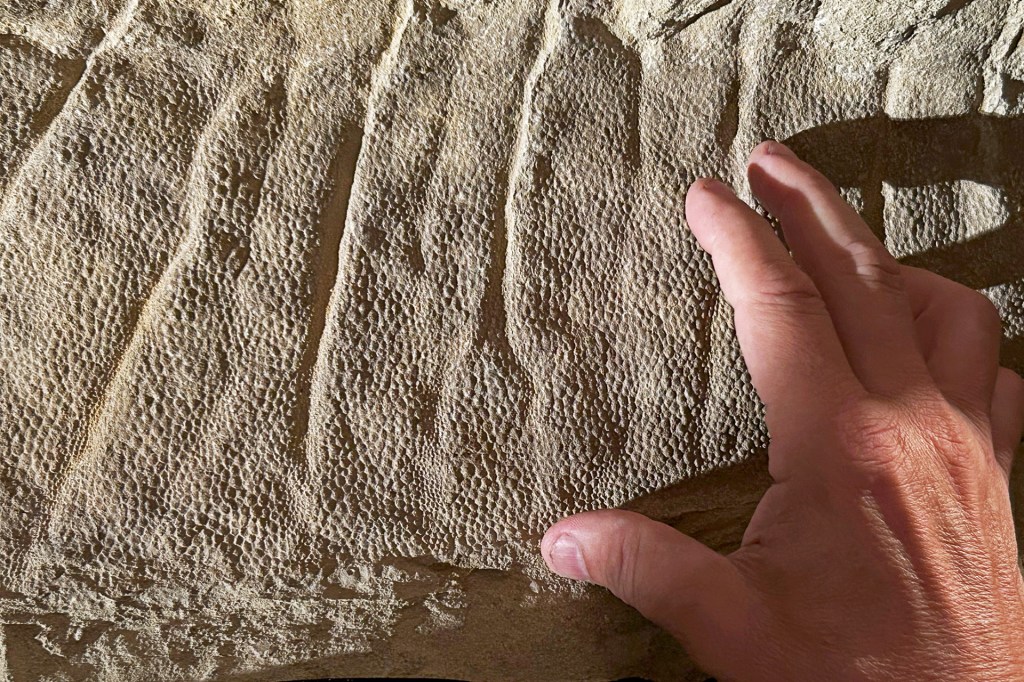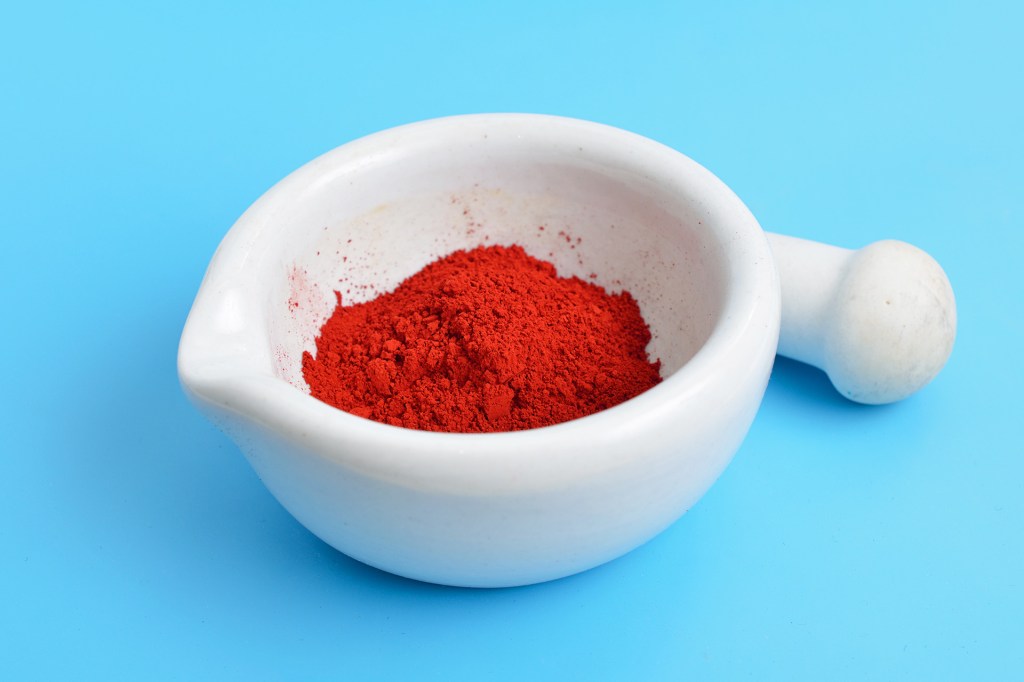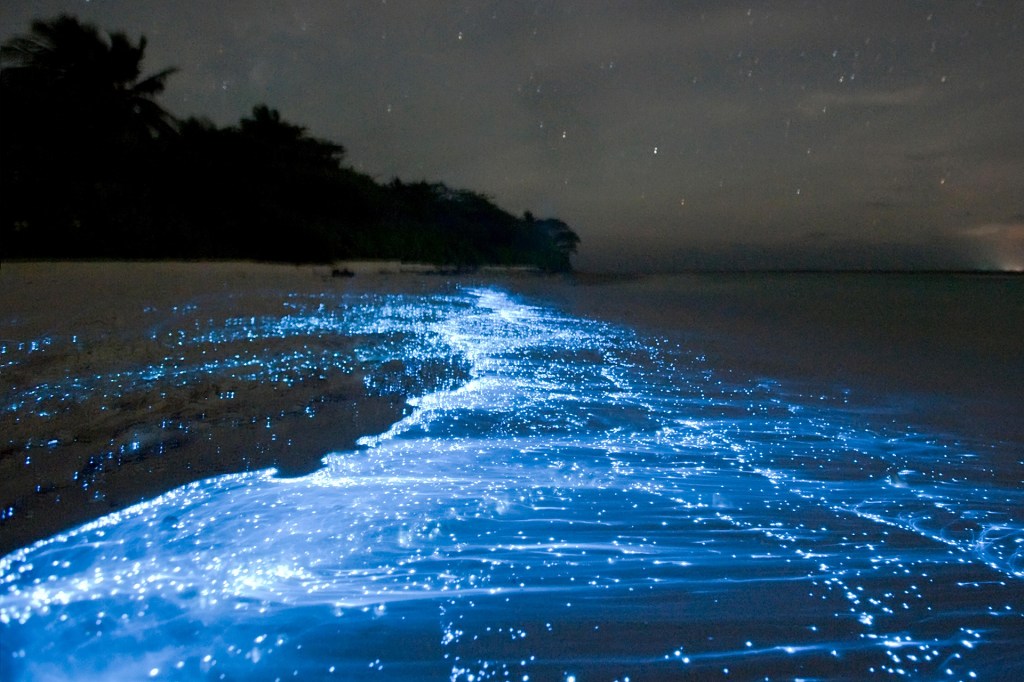
Researchers are looking to nature for innovative ideas.
Imagine a world where everyday objects produce their own light. Glowing trees illuminate
illuminate
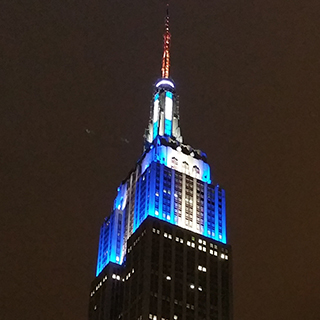 MARGARET STEVENS—EYEEM/GETTY IMAGES
to light
(verb)
The Empire State Building is illuminated every night.
city streets. Crops gleam to signal that they need water or they are ready to be picked. Street signs blaze with the light of millions of tiny organisms. It could happen!
MARGARET STEVENS—EYEEM/GETTY IMAGES
to light
(verb)
The Empire State Building is illuminated every night.
city streets. Crops gleam to signal that they need water or they are ready to be picked. Street signs blaze with the light of millions of tiny organisms. It could happen!
Innovators are looking to nature’s bright lights for ideas. Hans Waldenmaier studies fungi
fungi
 DOROTHEE DREYER—EYEEM/GETTY IMAGES
a group of organisms that includes mold, mushrooms, and yeast
(noun)
The hikers saw fungi growing on a tree stump in the forest.
deep in the forests of Brazil. According to Waldenmaier, the fungi produce a glow that is just like the light from a flashlight or a lightbulb. “But without electricity and from something that’s alive,” he told TFK.
DOROTHEE DREYER—EYEEM/GETTY IMAGES
a group of organisms that includes mold, mushrooms, and yeast
(noun)
The hikers saw fungi growing on a tree stump in the forest.
deep in the forests of Brazil. According to Waldenmaier, the fungi produce a glow that is just like the light from a flashlight or a lightbulb. “But without electricity and from something that’s alive,” he told TFK.
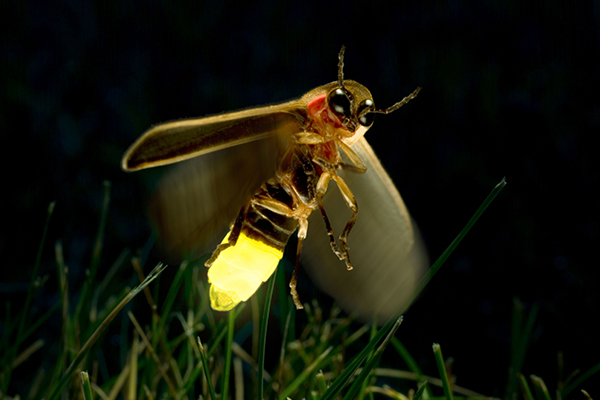
Bioluminescence is the result of a chemical reaction. The reaction produces light in a firefly’s abdomen. The light attracts mates.
PHIL DEGGINGER—ALAMYBioluminescent organisms produce light through a chemical reaction. About 80% of the planet’s bioluminescent organisms are found in the ocean.
The ability to glow serves a variety of purposes. Some creatures use their light to communicate, others to hunt, to mate, or for self-defense. The vampire squid, for example, squirts a cloud of light to confuse predators.
Bioluminescent organisms are inspiring discoveries. “It’s quite an exciting time in bioluminescence,” Waldenmaier says. “The possibilities are endless.”
Read about three ways researchers are taking their cue from nature.
Illuminating Discoveries

Scientists are copying glowing organisms to study cancer cells like these.
GARY LUKERGary and Kathy Luker are research scientists at the University of Michigan. They use bioluminescence as a tool in cancer research. The Lukers have turned to glowing arthropods like fireflies and click beetles to understand how some cancer cells work. In one experiment, the scientists make healthy cells glow one color and harmful cells another. “The click beetle has two light organs—a green and a red one,” Kathy Luker says. “We just copy what the beetle does and put that into the cells [we are studying].”
Green Light
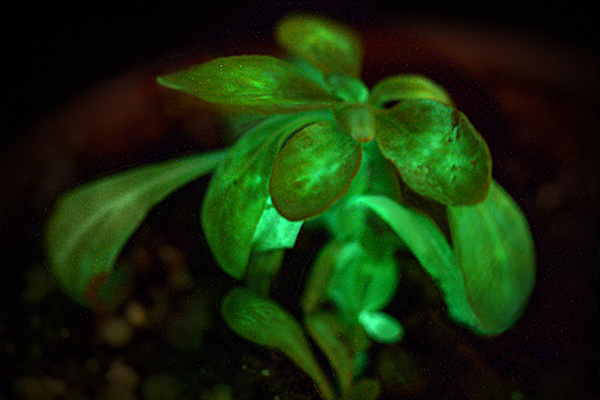
Gleaux sells houseplants that glow in the dark.
COURTESY GLEAUXBioluminescence doesn’t exist naturally in plants. But a company called Gleaux is creating plants that light up. “People have dreamed about this stuff for many generations,” says the company’s founder, Alexander Krichevsky. He is working toward a future in which gleaming plants replace indoor lamps and glowing trees line highways. The future of farming looks bright too, says Krichevsky. Crops might glow to let farmers know when they are ready for nourishment or harvesting.
That Natural Glow
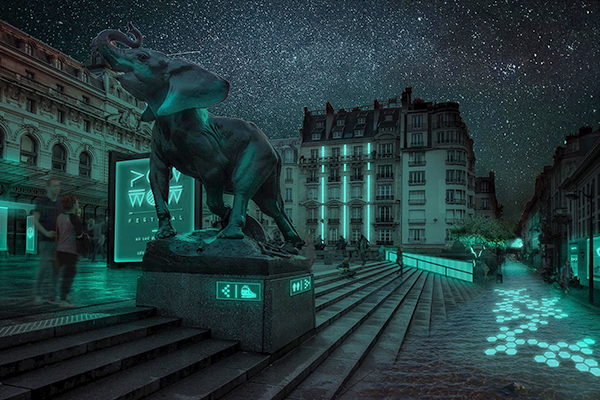
Glowee creates Earth-friendly light displays using tiny, bright bacteria.
SANDRA REY—GLOWEEThe French company Glowee is lighting the way with bioluminescence. The company has developed technology to illuminate store windows and street signs using lab-grown bioluminescent bacteria. It is the same type of bacteria that causes Hawaiian bobtail squid to shine. Glowee hopes its inventions will one day replace electric lighting. “This could be a great solution for the future of energy and light,” says Glowee’s founder, Sandra Rey. “Our impact is global.”
Glowee’s installations only last about three days. Once the light fades, the company recycles the bacteria for reuse.
Now Rey and her team are playing with nature to improve the quality of their light. They are working to create light that shines brighter, lasts longer, and comes in a variety of colors.
“Nature can come up with solutions,” Rey says. “Everything works perfectly in nature—we just have to look around ourselves.”





